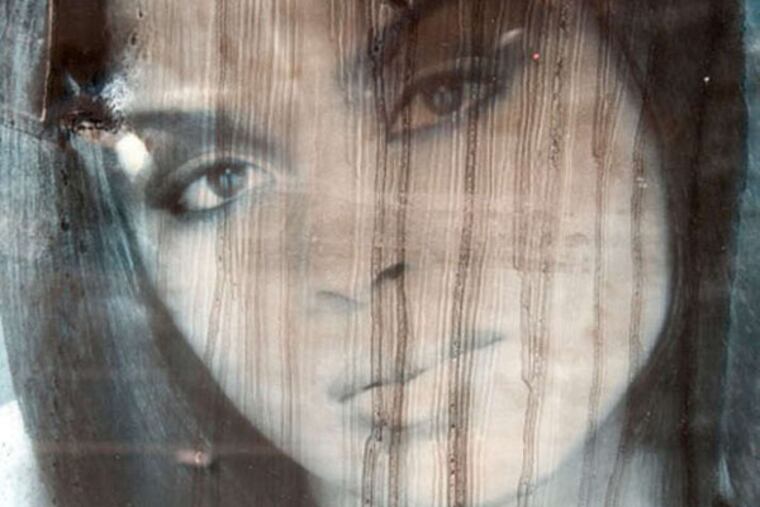Galleries: Four Philadelphia shows feature artworks by Charles Searles
Two Philadelphia artists who created entirely different bodies of work in their careers but whose art displayed a similarly strong desire for personal expression are being remembered in memorial exhibitions this month and next.

Two Philadelphia artists who created entirely different bodies of work in their careers but whose art displayed a similarly strong desire for personal expression are being remembered in memorial exhibitions this month and next.
Charles Searles (1937- 2004), a West Philadelphia-born African American artist who studied at the Pennsylvania Academy of the Fine Arts and taught at Philadelphia College of Art (now University of the Arts) is the subject of four shows. Two of them - at the La Salle University Art Museum and Temple University's Tyler School of Art - grew out of exhibition seminars taught last fall at both colleges and were largely developed by undergraduate and graduate students who took the courses. The catalog, a product of both seminars, features their essays.
Searles' entire career is explored in "Charles Searles: The Mask of Abstraction" at the La Salle University Art Museum. Early figure drawings and paintings from his PAFA student days are there, as are poignant black-and-white photographs of South Philadelphia street scenes and assemblages of old signs and other materials he found on walks to and from his South Street studio.
His later paintings and sculptures are vibrantly colored and patterned, made after a transformative 1972 visit to Nigeria and Ghana on a Ware Memorial Travel Scholarship from PAFA (Searles was also awarded PAFA's Cresson Memorial Travel Scholarship). They continue his study of the figure, but as an abstract form he can manipulate at his whim. The introspective nature of his early work may linger, but it's almost impossible to recognize under these colorful exteriors.
Tyler's soaring atrium makes a striking backdrop for "Charles Searles: In Motion," which is devoted entirely to Searles' later sculptures and large-scale paintings and which captures the exuberance of his African-influenced painted-wood, often freestanding, works. His sculptures give the impression of motion, and there's an interaction between these colorful works suggesting that Searles envisioned the ways in which his works might be seen in groups and how their individual forms might play off one another. There's a certain drama generated by the close proximity of these energetic sculptures, but it's also easy to imagine Tyler's entire ground floor given over to them. Seen individually, as in the La Salle show, they can be surprisingly self-contained.
More Searles works can be seen in the Woodmere Art Museum's "Charles Searles: A Focus on the Figure," through June 16; his large wall sculpture New Depths (1989) is on view in PAFA's Tuttleman Sculpture Gallery through May 31.
In contrast to Searles' later work, the textile art of Deborah Warner, who died in July at 64, seems hermetic and quietly beautiful. Rosenfeld Gallery has done it poetic justice in a one-person show of works made throughout her four-decade career that could qualify as a small retrospective.
Warner, a graduate of Moore College of Art and Temple University, and eventual chair of Moore's now-defunct textile department, was drawn to textile art after studying at the University of Guanajuato in San Miguel de Allende in central Mexico. Horsehair became her signature material. Dyed, meticulously woven, and stitched to linen, her pieces, which suggest shadows cast on shades by window panes, alluded to her bedridden mother's final days.
Warner moved from stitching and horsehair to collages a few years ago. Like the woven works that preceded them, Warner's layers of fabric, photocopies of early maps of Germantown and East Falls - where she lived for much of her life - and other materials under a smooth, skinlike coat of translucent white encaustic paint seem an expression of her own history, diaries without words.
Room for all
Photography isn't what it used to be. The Print Center's "Fiat Lux" shows just how broad a practice/medium it's become through the works of Stefan Abrams, Micah Danges, James Johnson, Anna Neighbor, and Brent Wahl, all Philadelphia photographers who teach (or have taught) photography at local colleges and universities.
My particular favorites include Johnson's Lacock Abbey, an embroidered image of William Henry Fox Talbot's 13th-century home in England; photographs of clouds by Neighbor onto which she invited her young daughter, Ruth, to draw the clouds' contours; and Dange's large inkjet print on linen of two towels displayed on the gallery floor.